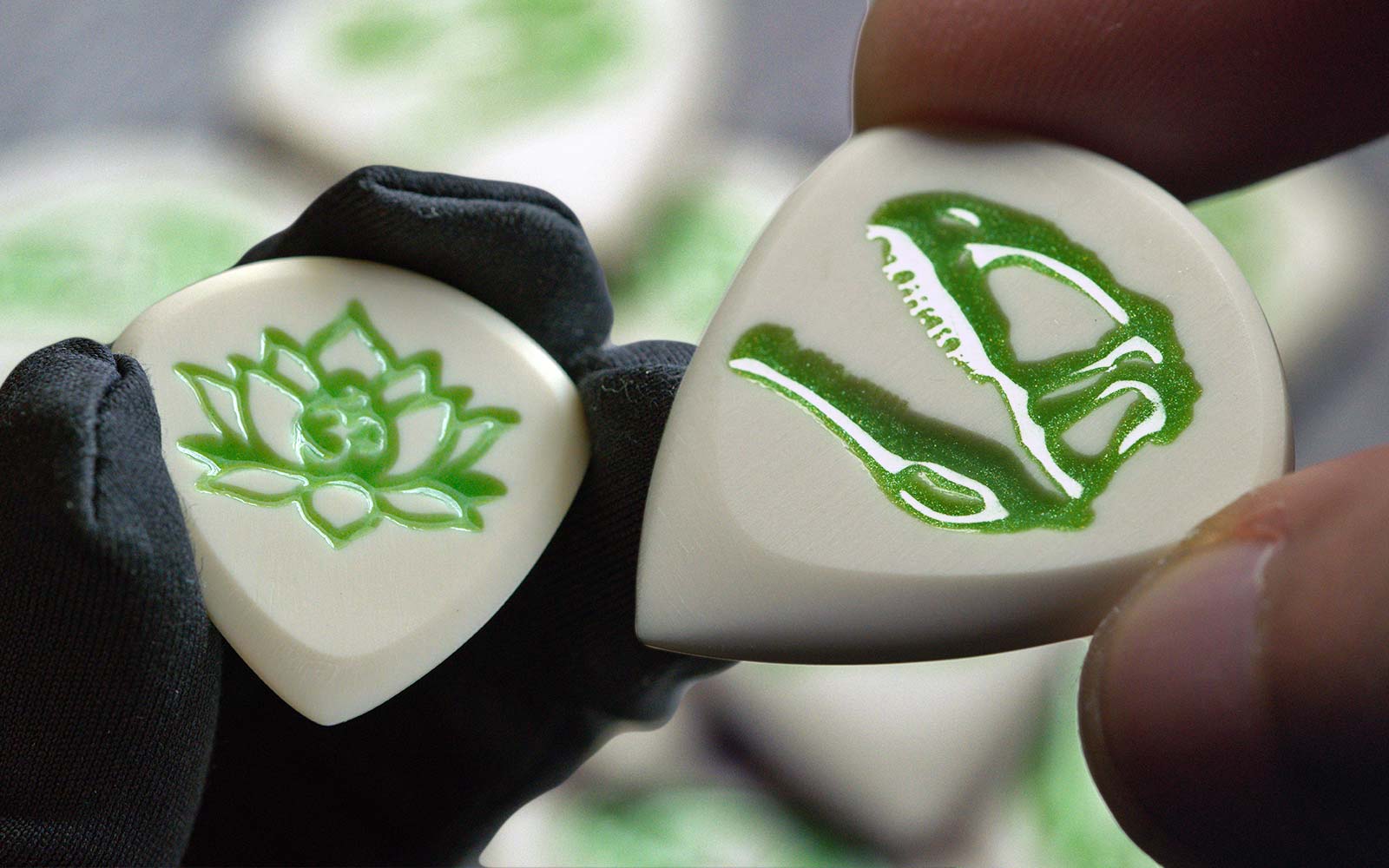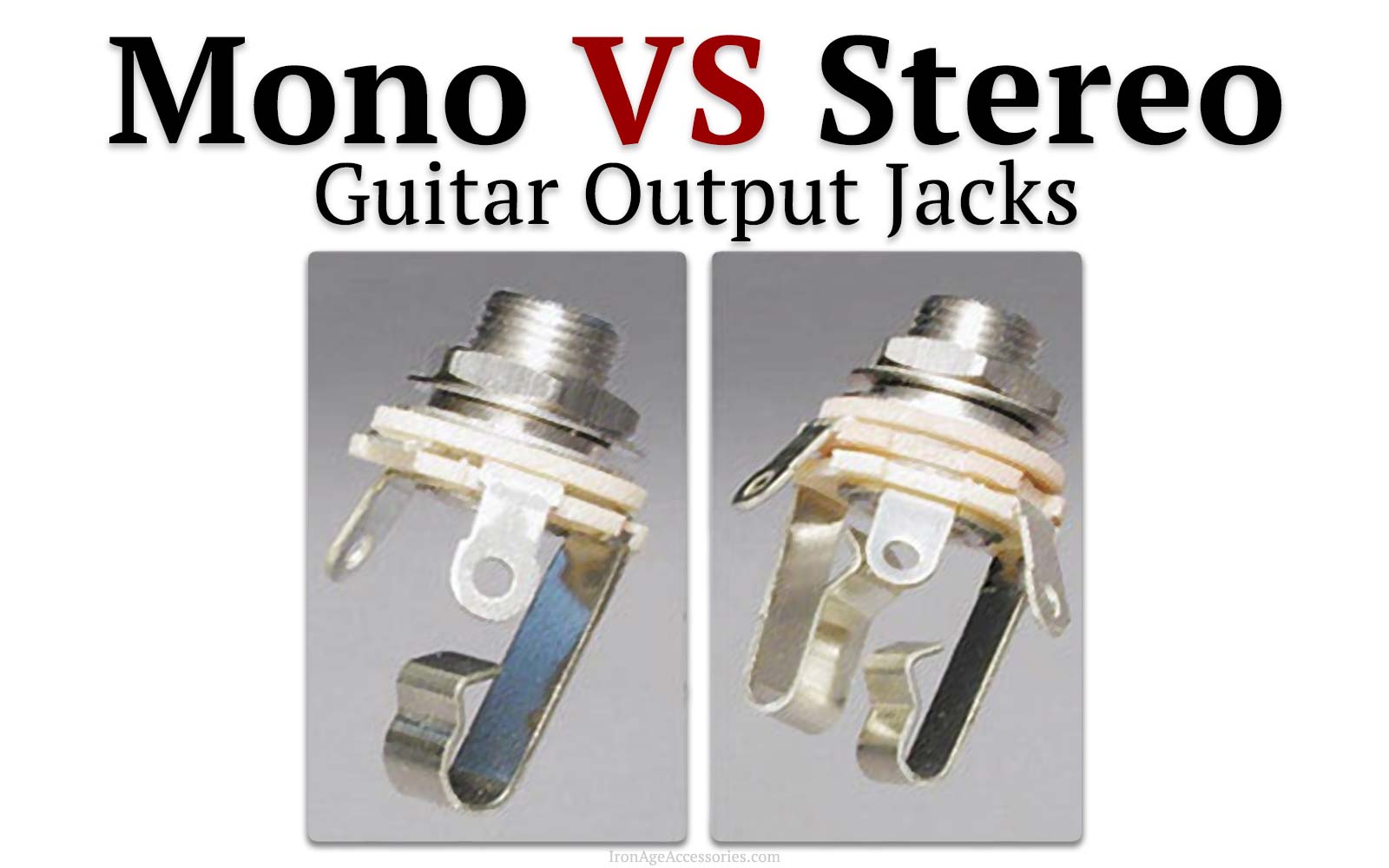Guitar Knobs Sizing Guide: Types, Dimensions, Potentiometers
by Alex Rodea June 11, 2024
There's a few things that need to be considered when looking to upgrade your guitar's controls. Whether you want to upgrade the components or just change the look of your guitar to something more stylish. In this article we'll help you make an educated decision by considering the right fit, compatible parts, and of course what sounds (and looks!) best to represent you as a player.
Maybe you're looking to build your very own instrument & want to know the difference between the various options out there. Take a look below, because Iron Age has answers to all the questions you might be seeking regarding custom guitar knobs.
If you're looking for frequently asked questions, check out our Guitar Knob FAQ
Related: A Guide To Gibson SG Knobs
What Do Guitar Knobs Do?
Guitar knobs are designed to control the output of a guitar from the pickups to the jack. There are usually two basic types of knob setups but the possibilities are almost endless.
The first is a master volume knob with 2 tone knobs as commonly found in Stratocasters with a pickup position switch that gives you different sound combinations to choose from & adjust.
The second is simpler and is a volume knob and a tone knob that affects two or more pickups on the guitar.
These might be easier to wire up but the tone knob might have to be adjusted every time you switch between pickups,
whereas with multiple tone knobs, you can have different tone settings for each pickup.
The knobs on a guitar are generally connected in the same manner with minor variations here and there.
One of the more common wiring configurations is where the "tip" or "hot" wire leads to the pickup, then to the tone knob, the volume knob, and then finally back to the output jack.
There are other things that are thrown in the wiring system such as ground wires, batteries,
and even active components but this is the basic outline from pickups to output jack.
The tone knob controls the clarity of the pickups; it controls the sound from bassy and dark to clear and bright.
The volume knob is obvious in that it controls how loud or soft of a sound the guitar will produce through the amp, but can also help to tame down distortion & produce more of a crunchy tone instead of full-on saturation.
There are some guitarists that are major tone-seekers & focus heavily on the tweaking the sound that comes out from the amp,
guitar, and all the components in between ranging from pedals to picks & other hardware bits.
In this realm, tone not only has to do a lot with the amp/pre-amp settings you have, your pedalboard, or other gear you might possess, but also the settings your tone knobs are set at.
The tone knob has the final say in all of this & it's all within instant reach.
How Do I Remove My Old Knobs?
If you want to get that stubborn protective plastic out from under the knobs on a new guitar,
replace them or see what types are compatible with your guitar, you need to first remove them.
The best way to take the stock knobs off your guitar is to wedge a sturdy thin material between the surface and the knob itself.
Thin, sturdy guitar picks, old credit cards, or sometimes even business cards are useful.
Then keep nudging and gently pulling up, it usually pops right off!
Other popular methods include getting a thin piece of cloth wrapped tightly under the knob and then gently pulling upwards.
I suggest using a combination of both, using a pick to pry it up, creating a space to then nudge the cloth between the old knob and the surface of the guitar,
and then use the cloth to pull it up safely.
Here's a great example on how to do this:
What Are The Different Knob/Pot Sizes?
Unfortunately, guitar knobs are not universal, so you have to match the control shaft on your guitar and the knob you buy.
The control shaft is the part of the guitar that protrudes from the potentiometer.
It's the piece that will be inserted into the knob and give it a snug fit.
Typically it will have a set number of splines that define its fitment but there also also some variations that are totally smooth & require knobs with a set-screw.
If you're looking to buy a replacement set of guitar knobs but don't know which ones will fit, we recommend removing one of your existing knobs to check the splines.
Splines are the ridges or "teeth" on the control shaft and there's generally 2 types of fitment that can be determined by counting them. There's potentiometers that have "coarse" splines & there's ones that "fine". This also breaks down into one being a metric (coarse) size using millimeters & one being imperial (fine) using inches for the measurements.
Unfortunately the two are not interchangeable, although you might be able to modify the knobs if you have the knack for those sorts of modifications & have the tools. 
Coarse Spline
Also called Metric size, or imported knobs, are the most popular control shafts - Especially the "Alpha" brand pots.
You will find these on most imported guitars, and to go out on a limb, perhaps on over 80% of all guitars unless otherwise stated.They are a 6mm split shaft, with 8 splines on each side, which makes 16.
Now, when looking for the type of knob, remember that a knob that fits the metric pot will say 18 splines, this is because the inside of the knob itself has 2 extra ridges to account for the split in the split shaft. The ridges of these potentiometers are thicker and there are less of them compared to the imperial-sized knobs/pots.
Fine Spline
Also called Imperial size, which include USA based brands, like CTS & Bourns are a .235" in diameter which translates to 5.95mm.
These knobs are slightly smaller than the metric ones & have finer "teeth" or 10 splines on each side, which make for a total of 20. When looking for a knob that fits the imperial size, the description will market it as having 24 splines.
Again, to compensate for the illusory 4 included in the split. Fine spline shafts have thinner and more ridges & a knob that's fitted for this type of potentiometer will not fit a coarse-splined pot.
Typically you will only find these on higher end guitars and the guitar's product description will usually include the potentiometer brand there as part of the hardware specifications.
Solid Shaft
Lastly, there is the solid shaft, the type of guitar knob that fits these uses a set screw to fasten the knob onto the smooth, ridgeless shaft.
These knobs & pots are typically sized in a 1/4" diameter or the equivalent to 6.35mm.
So you could potentially install one of these knobs onto a coarse or fine potentiometer but it might require an extra brass "sleeve" insert but the side-screw should help to secure the knob in place.
A solid shaft however, will only take a knob that is also its same 1/4" diameter as the other 2 options are just too small.
Useful Tip & Resource:
If you're looking to buy some guitar potentiometers to fit your new knobs or fit a new guitar build, check out none other than Stew Mac. They have plenty of great info too!
Guitar Knob Styles
Now that you know the technicalities, we can get into what looks good and is best for your style and instrument.
Hat Knobs
These are the ones you’ve most commonly seen before, the hat, or bell knobs have a thicker diameter and then get thinner towards the top. They are seen on Strats as the classic solid colored plastic knobs with the numbers on the bottom and on Les Pauls, which are usually black, gold, or amber and translucent with numbers inside.
Speed Knobs
Commonly seen on Gibson guitars and PRS, speed knobs are also referred to as hatbox or barrel knobs. They are solid cylinder shaped with the number dials presented beneath see-through plastic material. They can also be found in black, gold, or amber color.
Dome and Flat Top Knobs
The Dome knobs are typically made from metal with a rigid grip along the sides. These knobs usually utilize the setting screw for installation and are compatible with the solid shaft control pot. These knobs really compliment the guitar with a clean, polished appearance, pairing spectacularly with vintage guitars! The dome knobs are popular for their usage on the Telecaster and P- Bass!
Flat Top knobs are similar, and are often found on the Telecaster, Duosonic, and Music Master guitars and some basses.
How To Install Guitar Knobs? A Quick Overview
Installing control knobs is as easy as taking them off! Once you have identified what type of potentiometer your guitar has, it’s up to you as the guitarist to choose the type of guitar knob you want to go on your guitar. For all knobs, you want to turn the potentiometer either all the way up or down. There is no right or wrong way to do this!
If you turned the knob up, or clockwise, then you should align the highest number on the knob to whatever position you see fit. If you turned the knob down, or counter-clockwise, then align the lowest number, and in some cases, the single dot indicator, on the knob to whatever position you see fit. Remember to fasten the knob down with a setting screw if your knob has that option!
Guitar knobs are ALWAYS adjustable, so if you don’t like how it looks or you’re not happy with the position that it’s in, change it out! This type of customization is supposed to be what makes YOU as the guitarist happy and what you want your guitar to look like. Make sure you are precise about the type of knobs you have; is it a coarse spline, fine spline, or solid shaft.
Where Can I Buy Some Cool Guitar Knobs?
If you're looking to customize your instrument or equipment, Iron Age has a plethora of options that make an average guitar stand out.
The knobs we make are made to fit 18-spline coarse knurled potentiometers.
We currently offer Imperial Blue, Roman Red, and Coral Blue for a pearlescent/color design that comes with a green or aqua glow indicator. We also offer special design knobs that have a UV reactive (glow in the dark) Filigree design that’s available with either green or aqua glow, or an ever-popular Celtic Knot design.
All our knobs have sturdy black bases with knurling for enhanced grip to keep you 100% in control. Learn more about Iron Age >Guitar Knobs Here<
Conclusion
There's 2 basic sizes for potentiometers & guitar knobs which are the most common.
Here's the quick summary & some of their defining characteristics:
Coarse Splined (Metric)
- Also known as Metric size or imported
- Have 16 Splines on the potentiometer
- Have 18 Splines inside the knob
- Diameter: 6mm
- Common brands: Alpha pots & most imports
Fine Splined (Imperial)
- Also known as Imperial size or American
- Have 20 splines on the potentiometer
- Have 24 splines inside the knob
- Diameter (split shaft): .235" (5.95mm)
- Diameter (solid shaft): 1/4" (6.35mm)
- Common brands: CTS & Bourns
If you have any other questions not covered in this article,
check out our other article: Guitar Knobs Frequently Asked Questions
Thank you for reading through our guide to guitar knobs.
We hope that you learned something about them. Feel free to share this article with your guitar friends!
If you have any other questions, please feel free to drop us a comment below!
Regards,
Emma & The Iron Age Team
Also in Iron Age || General Blog

The 3 Best Engraved Guitar Picks to Personalize Your Playing Experience
by Alex Rodea March 20, 2025
Engraved guitar picks add both style and function, offering extra grip and a personal touch with custom initials, logos, or messages. Whether you're looking for a unique gift or a pick that stands out, check out our top choices and grab your first engraving for free with code...

Guitar Jack Not Working? Here's A Few Easy Steps To Fix Crackles & Pops
by Alex Rodea March 19, 2025

Mono vs Stereo Jacks: Key Differences & How to Wire Them
by Alex Rodea March 06, 2025

The Best Acoustic Guitar Picks: Tips & Considerations For Newbies
by Alex Rodea March 06, 2025

The Best Guitar Picks For Bass: A Guide To Help You Choose
by Alex Rodea March 05, 2025

What is a Fret Wrap, String Muter, or String Dampener?
by Alex Rodea March 05, 2025
+Iron Age Blogs
For the latest news & announcements, check out our News & Updates Blog
For tips, tricks, & other informative articles, check out our General Guitar Blog
Become a newsletter subscriber to get the latest info on new blog articles, receive exclusive promo codes, and be notified of upcoming giveaways!
+Recent Articles
-
The 3 Best Engraved Guitar Picks to Personalize Your Playing Experience
March 20, 2025
-
Guitar Jack Not Working? Here's A Few Easy Steps To Fix Crackles & Pops
March 19, 2025
-
Mono vs Stereo Jacks: Key Differences & How to Wire Them
March 06, 2025
-
The Best Acoustic Guitar Picks: Tips & Considerations For Newbies
March 06, 2025
-
The Best Guitar Picks For Bass: A Guide To Help You Choose
March 05, 2025
-
What is a Fret Wrap, String Muter, or String Dampener?
March 05, 2025
-
Guitar String Names & How To Memorize Them
March 05, 2025
-
How To Make Wooden Guitar Picks: Ebony Spearhead
March 05, 2025
-
Top 3 Best Guitar Picks For Grip: Iron Age Edition
March 05, 2025
-
Are Guitar Picks Necessary? Exploring the Pros, Cons, and Playing Styles
March 05, 2025
+Affiliate Notice
Iron Age is a participant in the Amazon Services LLC Associates Program, an affiliate advertising program designed to provide a way for websites to earn advertising revenues by advertising and linking to Amazon.com
Iron Age Guitar Accessories
226 Douglas Way St
San Antonio, TX 78210
USA
⚔️
“Quality is never an accident. It is always the result of high intention, sincere effort, intelligent direction and skillful execution. It represents the wise choice of many alternatives.”
~William A. Foster (MOH Recipient, 1945)
Sign up for the Iron Age newsletter to Save 15% on your 1st order, plus get exclusive offers, product updates, and early access to giveaways!
© 2025 Iron Age Guitar Accessories.
Est 2015.





Alex Rodea
Author
Founder of Iron Age, my guitar journey began in 2006, fueling a passion for crafting premium guitar accessories that embody timeless style & innovative expression. Through my Stay Tuned Guitar site I also share tips & info for new guitarists, offering everything from beginner tutorials to DIY tips & general music knowledge.